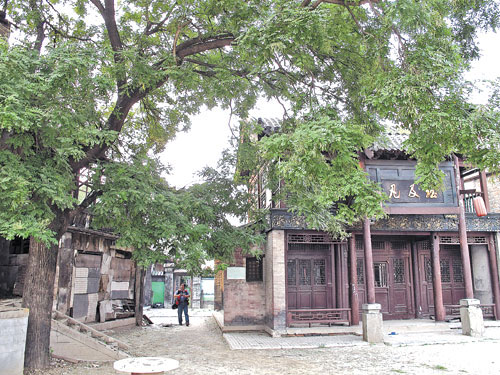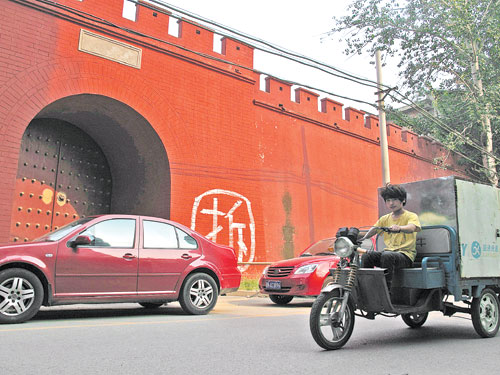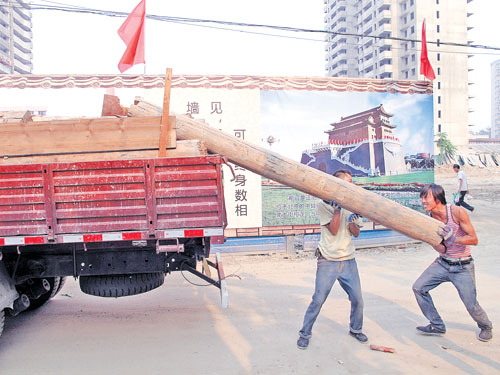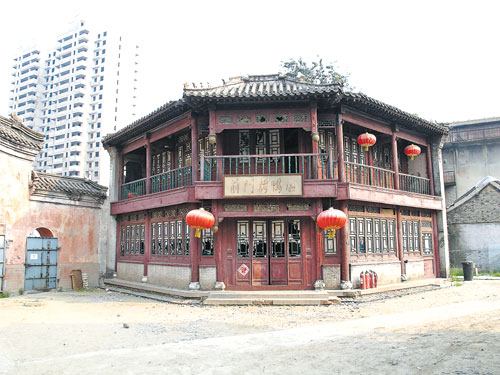
 |
|
Ming and Qing Street in Beijing Film Studio is almost deserted and closed to visitors. |
 |
|
The Chinese character of "chai (demolish)" is painted on the wall of Ming and Qing Street. |
 |
|
Demolition work starts at the Beijing Film Studio. |
 |
|
One of the major structures by Ming and Qing Street waits for its turn to be torn down. |
 |
|
Workers move filming equipment out of a warehouse in the studio. Photos by Jiang Dong / China Daily |
After more than 40 years at its current location, Beijing Film Studio is being demolished and moving to a swanky site on the outskirts of the capital. Han Bingbin finds out why the move is causing anxiety.
By the time the news is out about the demolition of Beijing Film Studio, China's oldest film shooting base and one of the capital's must-go tourist destinations, many Chinese movie fans are already too late to take a last look.
Related: Funny about that hutong
The studio's two most important film sets, the Ming (1368-1644) and Qing (1644-1911) Street as well as the Rongning Palace, stopped receiving visitors on July 27. The walls of both buildings are painted with huge Chinese characters "chai (demolish)". The rusty iron doors are shut.
What's locked inside are silver screen memories cherished by generations of Chinese. They include some of the most successful productions in Chinese cinematic and TV history such as screen classic A Dream in Red Mansions (1987), international award-winning movie Farewell to My Concubine (1993) and the most-watched TV series among Chinese viewers worldwide, Princess Pearl (1998-2003).
Part of the land will be used to build residential buildings for an affordable housing project that is now under construction.
The China Film Group Corporation (CFGC), which is the owner of the studio, has kept a low profile so far as to what will become of the rest of the studio, located on a commercially-valuable land right beside the North Third Ring Road.
It has been widely reported that the land will be used for a dream factory project called Beijing Creative District, jointly initiated by the film group and a Shenzhen-based real estate company. The project includes a movie-themed hotel, a high-end shopping mall and a cineplex.
When Beijing Film Studio moved to where it is now, in 1971, it was surrounded by farmland. But over the years, the district has become a densely inhabited golden mile. Though the business value of the land has increased, the development of the studio has met its bottleneck.
Han Sanping, head of China Film Group Corporation, said to local media that the location as a film shooting base is no longer cost-effective due to its scale.
Therefore, starting in 2008, the group started to relocate its shooting facilities to the company's newly built film base in Huairou, on the outskirts of Beijing. The new base now has 16 studios, including the world's largest, spreading across 5,000 square meters, and has a production capability of 80 movies, 200 made-for-TV movies and 500 episodes of TV series a year.
In fact, as China Vision Media Group's vice president Yang Jinsong told the Beijing News, Beijing Film Studio started their relocation plan as far back as 10 years ago. As the industry develops, he said, it's a must for factory-like film bases to move to the quieter, cheaper and larger suburbs.